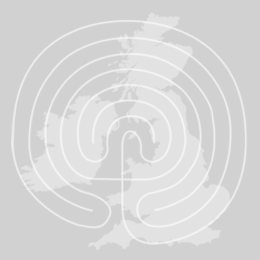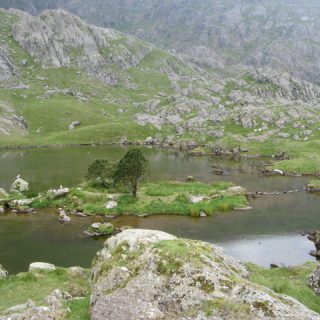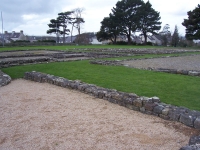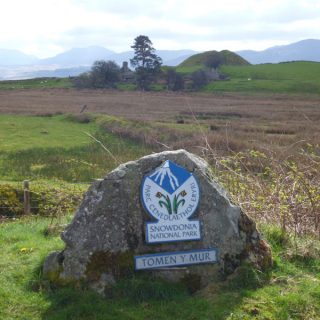Category: Welsh Folktales
The 18th century Glanbran House was dismantled around 1930 and was the ancestral home of the Gwynne family, the descendants of David Goch Gwyn who settled at Glanbran in the 16th century. Wirt Sykes in his British Goblins: Welsh Folk-Lore, Fairy Mythology, Legends and Traditions (1881) gives the following story in which an unnamed member of the Gwynne family plays a prominent part.
Wirt Sykes gave the following Glamorganshire folktale in his ‘British Goblins’ (1881). ‘On a certain farm in Glamorganshire lived Rowli Pugh, who was known far and wide for his evil luck.
In ‘Celtic Folklore Welsh And Manx’ (1901), John Rhys recounted the following folktale originally passed down Siân Dafydd of Helfa Fawr, and Mari Domos Siôn of Tyn Gadlas, Llanberis who would probably have been born around 1770.
This natural spring is situated on flat ground on the northern side of the headland of Great Orme. It is said that it never runs dry, even in times out drought. The water from the well is also said to be beneficial in the development of strong bones and teeth in children. There is an old story linked to this well.
This is another sunken palace / drowned town legend from north Wales. As the story goes, Llys Helig was the palace of Helig ap Glannog, and it once stood somewhere in the area that Conwy Bay is today. It is said to have been inundated by a great flood sometime in the 6th Century. There are several different recounts of the legend, but the one below is a popular one.
This is the remains of a Roman auxiliary fort, one of the largest, and last to be abandoned by the Romans in North Wales. It was built by Gnaeus Julius Agricola in around 77 AD after his victory over the native tribe, the Ordovices.
Tomen-y-Mur (translated as ‘Mound in the Walls’) was originally an ancient Roman fort on the slope of Mynydd Maentwrog to the north east of Llyn Trawsfynyedd, with access from A470 although it is not signposted.
The following story appeared in P. H. Emerson’s ‘Welsh Fairy-Tales and Other Stories’ (1894). Many years ago the Welsh mountains were full of fairies. People used to go by moonlight to see them dancing, for they knew where they would dance by seeing green rings in the grass.
WHEN the seven men of whom we spoke above had buried the head of Bendigeid Vran, in the White Mount an London, with its face towards France; Manawyddan gazed upon the town of London, and upon his companions, and heaved a great sigh; and much grief and heaviness came upon him.
Lady Charlotte Guest published the first English translation of The Mabinogion and below is how the tale of The Dream of Rhonabwy appeaed in it [1877].







Recent Comments